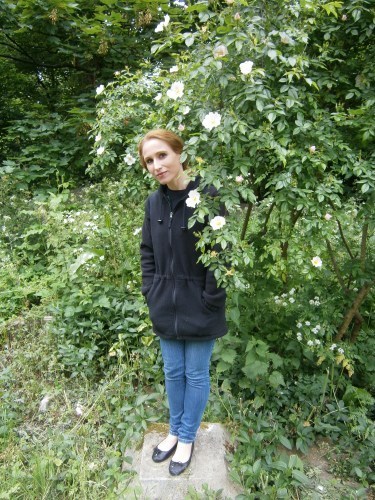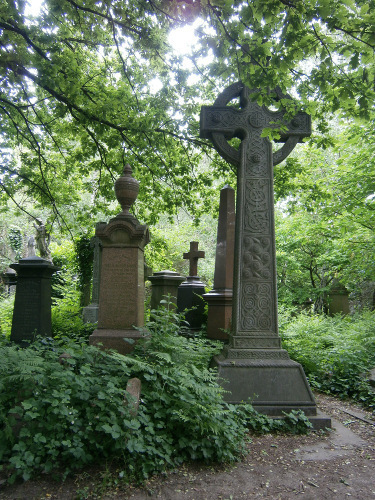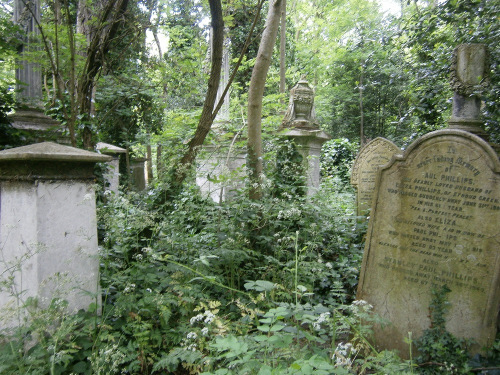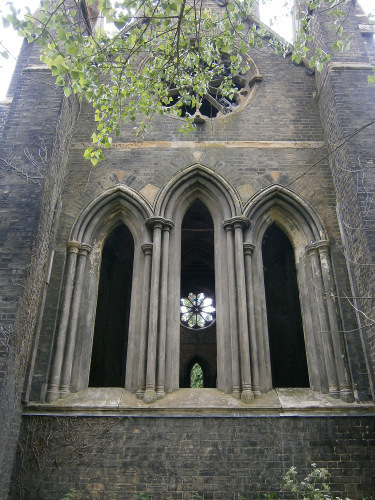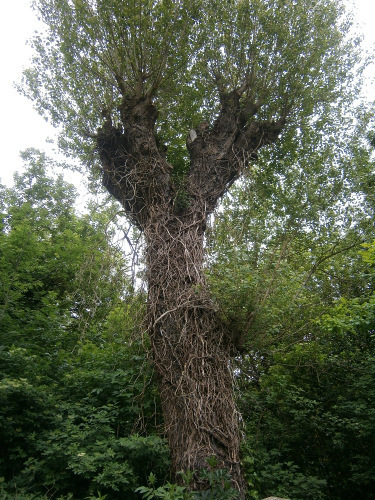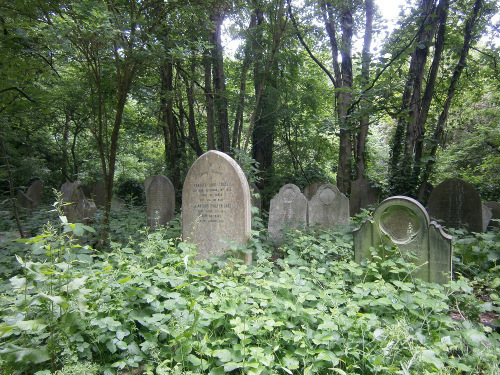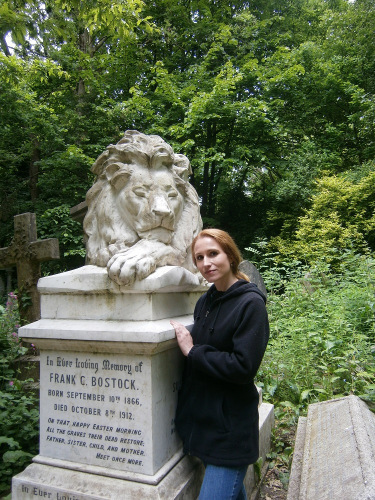The Graveyard
On my last day in London, I went to a lecture on graveyards and then walked around the Abney Park Cemetery in Stoke Newington. Here is me in the cemetery:
(Is there a difference between cemeteries and graveyards? I’m guessing it’s another one of those instances in which the English language has two ways of expressing the same concept: one from a Latin root, one from Anglo-Saxon.)
The lecture was by a journalist who had researched and written a book on graveyards. He made the point that most of the people in large, elaborate tombs were now forgotten. They had wanted to be remembered, perhaps expected to be remembered, but a generation later, no one knew who they were. Their graves were no longer visited.
And then he talked about the people who were remembered, whose graves were still visited. John Keats. Oscar Wilde, whose grave was once covered with lipstick stains from where people had kissed it. (It has since been cleaned and a glass barrier put up, but I think the kisses are now left on the glass?) Keats was so certain he would be forgotten that all he wanted on his tomb were the words Here lies One Whose Name was writ in Water. His friends added, This Grave contains all that was mortal, of a YOUNG ENGLISH POET, who on his Death Bed, in the Bitterness of his heart, at the Malicious Power of his enemies, desired these words to be Engraven on his Tomb Stone.
Last year, I visited the graves of Louisa May Alcott, Henry David Thoreau, Nathaniel Hawthorne, and Ralph Waldo Emerson. (They are all in the same graveyard in Concord, Massachusetts). On each of them, admirers had left letters, flowers, small artifacts. When I visited the grave of J.R.R. Tolkien on this trip to England, I saw the same thing. Why do we remember certain people? Because they have given us something, and we care about them even in death. They live on for us through their words, their paintings. Their influence lives on, so for us they have never really died.
I loved walking around Abney Park Cemetery. As you can see, it’s almost a wild space in London: the vegetation has grown up so. I was with friends, and we rambled along the paths, looking at the gravestones. My favorite was a tomb with a lion on top: I’ve included a picture of me with the lion at the end of this post.
The lecture and walk really made me think about what I want to accomplish in my life, how I eventually want to be buried. Because, you see, I want to be one of the people who are remembered for having contributed something. I don’t care so much about a gravestone. It can be as plain as plain (although I’ve always liked the idea of an angel, because in a book I read as a child, two friends meet beneath a tomb with an angel on it). What I care about is the work, doing something meaningful.
We never know whether our work will be meaningful, of course. It could be forgotten. So much art, of heart and skill, is forgotten. What is remembered is the art that changes something, that touches us in a deep way, and who knows whether a particular piece of art will do that? All we can do is produce, keep producing, do our best.
Not everyone cares whether or not they will be remembered after their deaths — quite a few people have explicitly told me that they don’t. But I would like my work to have that sort of impact.
Which means that it’s time to get back to work. I’m in Budapest, I have two weeks before I need to be somewhere else. And I have a novel to write.



